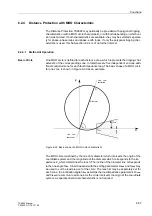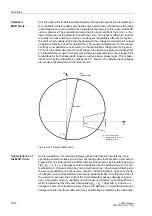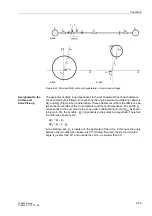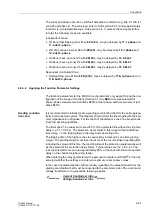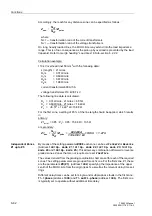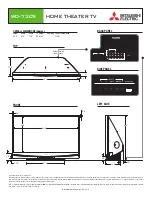
Functions
6-67
7SA522 Manual
C53000-G1176-C119-2
6.2.5
Tripping Logic of the Distance Protection
6.2.5.1
Method of Operation
General Fault De-
tection
As soon as any one of the distance zones has determined with certainty that the fault
is inside its tripping range, the signal “
'LV3,&.83
” (general fault detection of the
distance protection) is generated. This signal is alarmed and made available for the
initialization of internal and external supplementary functions. (e.g. teleprotection sig-
nal transmission, automatic reclosure).
Zone Logic of the
Independent Zones
Z1 up to Z5
As was mentioned in the description of the measuring technique, each distance zone
generates an output signal which is associated with the zone and the affected phase.
The zone logic combines these zone fault detections with possible further internal and
external signals, starts the associated delay times and arrives at the reaches the pos-
sible trip decision. The simplified zone logic is shown in Figure 6-35 using for zone 1,
Figure 6-36 for zone 2 and Figure 6-37 for the third zone. Zones Z4 and Z5 function
according to Figure 6-38.
In the case of zones Z1, Z2 and Z1B single-pole tripping is possible for single-phase
faults, if the device version includes the single-pole tripping option. Therefore the
event output in these cases is provided for each pole. Different trip delay times can be
set for single-phase and multiple-phase faults in these zones. For multiple-phase
faults and faults in the other zones, the tripping is always three pole.
The trip delay times of the zones (except for Z1 which is usually always set without
delay) can be bypassed. The undelayed release results from the line energization log-
ic, which may be externally initiated via the circuit breaker close signal derived from
the circuit breaker control switch or from an internal line energization detection (refer
to Sub-section 6.17.1). Zones Z4 and Z5 may be blocked by external criteria.
Note:
The input
!S7ULS3HUP
(
)1R
) must be activated to achieve single-pole
tripping. The binary input is usually controlled by an external automatic reclosure de-
vice.
Summary of Contents for siprotec 7SA522
Page 20: ...7SA522 Manual C53000 G1176 C119 2 ...
Page 64: ...7SA522 Manual C53000 G1176 C119 2 ...
Page 89: ...SIPROTEC 4 Devices 4 25 7SA522 Manual C53000 G1176 C119 2 Figure 4 20 CFC Logic example ...
Page 408: ...7SA522 Manual C53000 G1176 C119 2 ...
Page 456: ...7SA522 Manual C53000 G1176 C119 2 ...
Page 516: ...7SA522 Manual C53000 G1176 C119 2 ...
Page 620: ...Appendix B 48 ...





